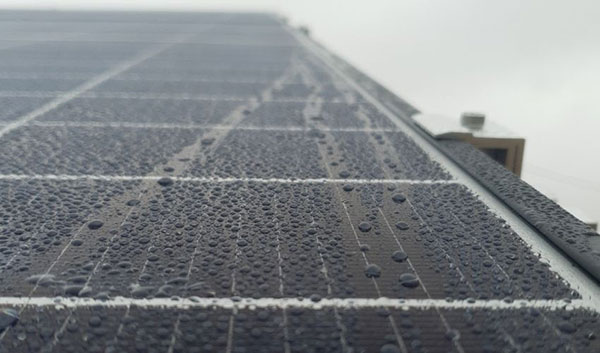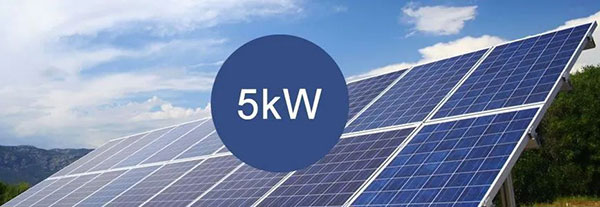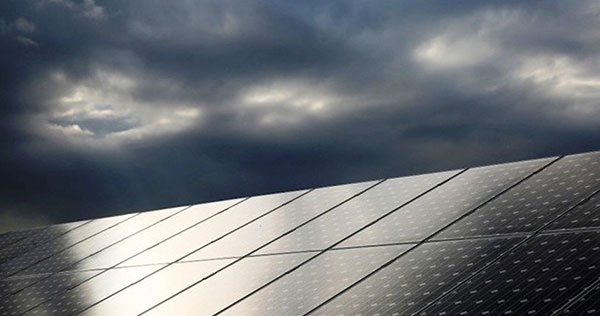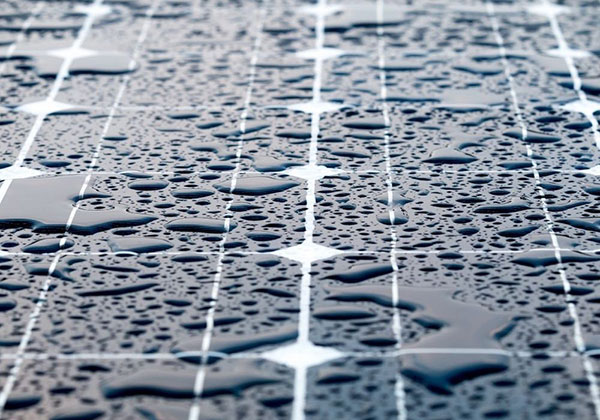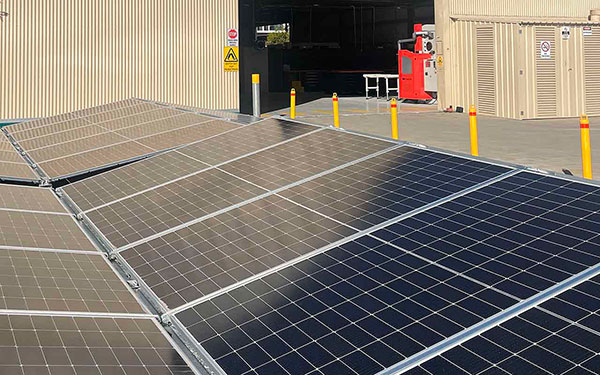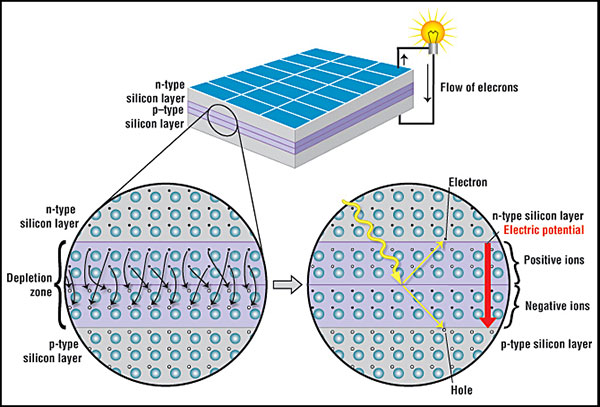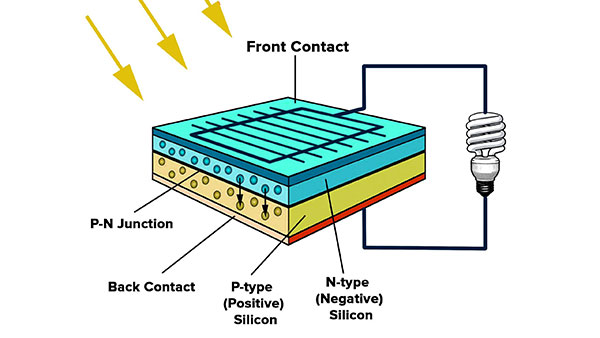Solar Panels and Their Resilience to Weather Conditions
Solar panels have become an increasingly popular means of using renewable energy. However, many residents remain concerned about their influence on the environment, as well as technological performance in the long term. The ardent issue is that of adverse weather conditions, particularly in cloudy and rainy weather. It is paramount to analyze the way solar panels function when there is no direct exposure to the sun.Photovoltaic Cell Response to Light Exposure
The photovoltaic effect and cells are key to understanding what solar panels are in essence. Light, represented in particles as photons, falls onto the solar cells and imparts energy to them. The electrons present in the atoms acquire additional energy which helps them flow across the cells, generating usable electricity. This process is known as the photovoltaic effect and its efficiency is based on the quality of cells produced and the type of energy source. When it comes to direct light exposure, top-tier monocrystalline silicon may generate up to 22% of the sunlight falling onto it. However, other sources prove that solar panels cannot always capture the direct sunlight as they may operate at 10-20% of efficiency even during optimal sunlight exposure.Operability of Solar Panels in Cloudy and Rainy Weather
It is paramount to stress that the research has found that solar panels can operate in a cloudy weather mode of 10-25% of its peak value. The primary reason is that diffused light is quite effective in generating electricity or reminds of “light scattering through the clouds”. Ultimately, rain can actually improve the quality of the panels’ performance. It is due to the fact that raindrops cleaning the dust and debris from the panels increase their efficiency by up to 5%.Weather Challenges and the Impact of Sun on Solar Panels
When considering the presence of photovoltaic cells within solar panels, it is appropriate to conclude that the sun is a welcome phenomenon. However, in many scenarios, the effects of the sun could be challenging and reduce the amount of power a panel could generate. Does it mean that we should decide against installing panels on days when it is sunny? Well, to consider the matter properly, it is imperative to explore the science behind photovoltaic cells and the design of panels.Weather Challenges and Solar Panel Resilience
It is important to note that solar panels are manufactured with numerous weather conditions in mind. Workers build these panels to endure high winds, heavy rain, and even snow loads. Materials used to create them, including tempered glass and hard plastic, are generally resistant to severe weather. Additionally, for places that experience hail, workers tend to protect solar panels with special added layers, which reduce damage. Moreover, the frames that hold the panels are characterized as durable metallic items. Finally, it is important to understand that solar panels have been tested to work when temperatures reach from -40°C to 85°C, namely they will work in a country like Canada or in the Sahara Desert.Rainfall and Solar Panels
Rainfall is beneficial for the solar panels in several ways. First of all, rainwater works as a natural detergent since it washes off the dust, pollens, and other particles with which solar panels accumulate. According to the National Renewable Energy Laboratory, the impact of dust on the efficiency of solar panels goes up to 5%. Thus, regular rainfall helps avoid such drastic consequences. Secondly, rain helps lower the temperature of the solar panels, given the fact that panels work at a maximum efficiency when they are around 25°C (or 77°F). When the temperature is above this maximum, the efficiency of solar panels goes down. Thus, the rain helps preserve efficiency. In addition, the durability of the panels and installation ensures that the water cannot touch the electric parts since the front of the panels is composed of tempered glass; solar cells are encapsulated with ethylene-vinyl acetate; or the layer is backed with a strong substrate and frame. Moreover, the systems are designed in a way so as to prevent any water from touching any instrument.The Effect of Reduced Light and Strategic Placement
It is important to consider, however, the effect of reduced light caused by rainy weather on panels. It is likely that, by triggering a slower light-induced corrosion process with a possible risk of salt erosion, rain can have a positive effect on solar panels in addition to keeping them clear. At the same time, less strong sunlight and more diffuse light can significantly reduce the electricity generated via solar panels. One way to mitigate the effect of overcast days is to install panels in such a way that they will receive light for most of the day. If panels are placed at an angle directed as closely to the sun as possible, they can be exposed to light for a longer period. Additionally, some solar systems are supplemented by energy storage devices, such as batteries, that allow for the storage of the energy generated under harsh sunlight conditions. This makes it possible to use additional electricity when sunlight conditions are not optimal for effective generation and can help maintain stable electricity supply.Importance of Clear Placement – Away from Shadows
One of the most important conditions to make sure solar panel output is at its maximum is clear placement. This means making sure that whatever location panels are placed at, the area is unshadowed at any part of a day. Shadows have a discrete impact on the operation of solar panels known as a “hot spot” effect. This reduces the performance of some of the panels by as much as 50%, making it highly relevant to avoid shadowy places. To make sure they avoid shadow, one has to observe the target area across a day – where the sun is located and at what part of the day, and whether any part of the area that can shadow panels, such as trees, buildings, or poles. Clear, open plain can be the ideal location as it will guarantee maximum sun and rain exposure, improving energy output.Optimal Angling
Another critical factor that determines solar panel placement and impacts its functionality is the placement angle. The optimal angle allows the rain to wash over better, which reduces accumulation and subsequent damage from accumulated water. According to the research, 30 degrees are an optimal angle of a panel installation as it most effectively counteracts reflection. More reflection occurs with higher angles, and less with lower, which also becomes less effective against the rain water. Moreover, there was an increase of up to 10% in energy production. Indeed, the local data, such as specific rain patterns, the volume of rain per year, has to be observed to make the most accurate assessment of the optimal angle.Rainy seasons and Self-cleaning Solar Panels
Rainy seasons may also affect the structure of the solar panels since the frequent falling of the water droplets will not only result in the accumulation of dirt and debris but may also indicate leaks. Nevertheless, the technological progress has offered the solution to the latter problem in the form of self-cleaning solar panels. These designs are produced with a hydrophobic film that helps to prevent water from adhering to the surface, and ultimately, improves the ability of the glass to stay clean. Thus, even though the manual cleaning will still be required occasionally, the benefits of reduced dirt can be more substantial. It is also possible to monitor the panels by integrating various sensors in the systems to track the production of energy or the quality of the cells. The implementation of this system is not difficult: close to the sun panels or a few meters away from them, an inverter is placed, which converts the energy and records the results. After the inverter is connected to the access point, one can benefit from the possibility to track the status of the panels online. In such a way, the frequent rainfalls, as well as the resulting accumulation of dirt, do not need to be a significant factor affecting the productivity of the energy. Thus, with the correct placement of the panels, appropriate angling, and regular maintenance, the technology can still serve as a major source of energy and contribute to environmental protection.Best practices for using inverter heaters to keep snow and ice off your panels.
- Do keep the area where the snow is falling cleaned off so it will melt off faster.
- Don’t put the panels in the freezer or a cooler to melt the snow or ice.
- Do not put your solar panels in a dehydrator or use a hair dryer to melt the ice.
Heat Pumps
- These pumps are also a good option. They utilize the heat in the air and then pump it into the panel to warm them. They require a separate heat pump for use. This can be a costly option if you don’t already have a heat pump installed on your home or in the area you use your solar panels.
Best practices for protecting your property from hail.
- Previous use of solar panels is a good predictor of future output.
- If you have experienced damage in the past you can adjust your angle of the panel to avoid ice slide off them faster.
Reporting Damage
- If you do have this kind of damage it is important to contact your solar installer and your insurance provider right away. They can come and take pictures of the damage and work up an estimate for the repairs. It is important to take care of any damage right away or you will experience downtime for your solar panels. If you report it right away you can get it taken care of and get back up and running without a lot of time lost.
Extreme Weather: High Winds
- High winds can pose a danger to solar panels if the mounting system is not secure. To protect your solar panels from strong winds, use a mounting system that meets the local building codes and meets the wind speed requirements. The wind load that a solar panel system should resist is based on the basic wind speed. In some areas, wind speed can range from 80 miles per hour to over 120 miles per hours. The mounting systems need to be designed specifically for the local wind loads. To make sure that your solar panels are secure and cannot be blown by the wind, it is important to install a secure mounting system. Regularly check the mounting system to ensure that it is not weak. Maintenance the mounts by re-tightening the screws. The solar panel owners need to consider these as extreme weather that is likely to destroy their solar panels investment. Proper preparation, use of quality material and proper care and maintenance will help in dealing with challenges likes such as extreme weather.

